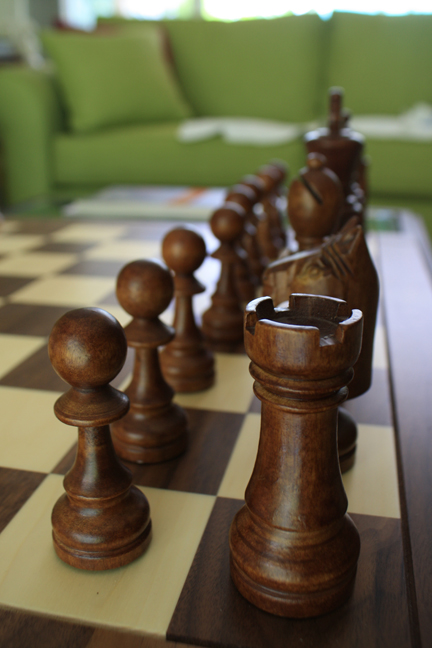“Chess is a sea where a gnat may drink and an elephant may bathe.”
Old (Asian) Indian proverb
Chess is usually described as a “game,” and as a general description, especially for those who don’t play, this is accurate. But for those who play, it is nearly always described as something more—a science, or more commonly, an art. Competitive chess at more advanced levels is even considered a sport, as the physical demands required to maintain extreme concentration for long hours over many days are tremendous.
Not long after I first learned to play chess, I knew there was something special about the game. It was not at all like other games. Luck had no place in chess, unless you were counting on your opponent to make mistakes—a sure way not to win many games. To be sure, while it required a level of mental focus, it always seemed simple and straightforward somehow. It seemed clean, and concise.
On a rare occasion, I’ve heard people remark that “chess is boring.” I can’t help but think that they have never really played. During a game, the number of possible moves for one player at any point could be as many as 218, but averages about forty. This means, when it’s your turn to move, you usually have about forty possible options to consider, and you may have as many as 218 possible moves. How could you be bored when you’re trying to decide which move is best out of 218? The overall complexity of the game is nothing short of mind boggling. There are 988 million positions that can be reached after just four moves each for white and black. It has been calculated that there are more—many more—possible moves in a typical chess game, than there are atoms in the known universe. Think about that one for a minute! More potential in a 64 square board with 32 playing pieces than all of the matter in universe!
Chess is the world’s oldest game, and more books have been written about it than about all other games combined. Even so, new books are released about chess every year. The reason is simple—there is no end to what can be discovered in chess. New tactics; new strategies; new principles discovered.
Chess is just plain “fun” at first, and if your attitude is right, it remains fun forever. And as you play and learn and change, the game changes with you. You explore ideas and try new moves. You dig deeper and gain a fuller appreciation of the game’s elegance and richness, and move ever closer, but never reaching, the fullness of its essence.
If you’re a person who loves learning, and you’ve never tried chess, you’re missing out. It’s always new. Every game, with every opponent holds new surprises and adventures.
I am happy to say that this issue of ALIVE was, in large measure, inspired by a young lady, Ann (The Commander) Smith. Ann is a model of what a good chess player should be—smart, eager to learn and ever-improving in skill; polite, sportsmanlike and always gracious in both winning and losing. Ann has the potential and attitude, not only to be good, but great at chess. You can read about Ann’s chess playing experience on page 23.
Leave a Reply